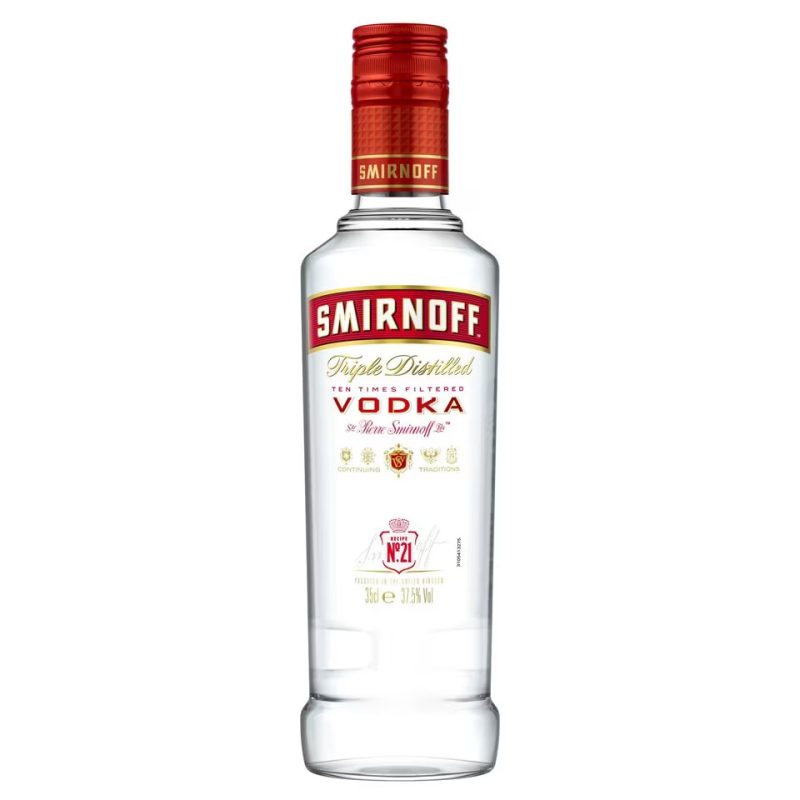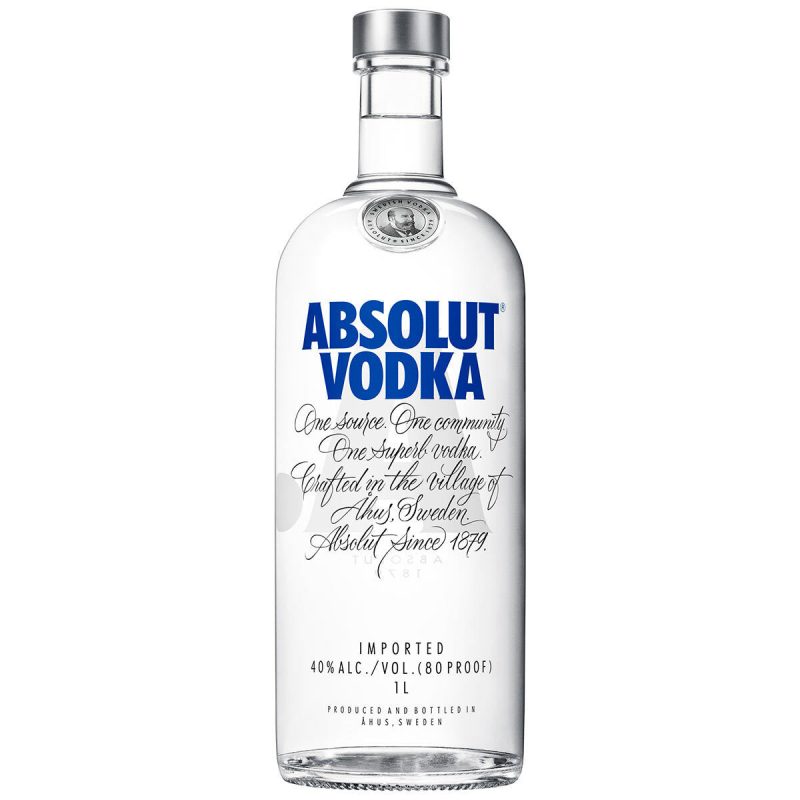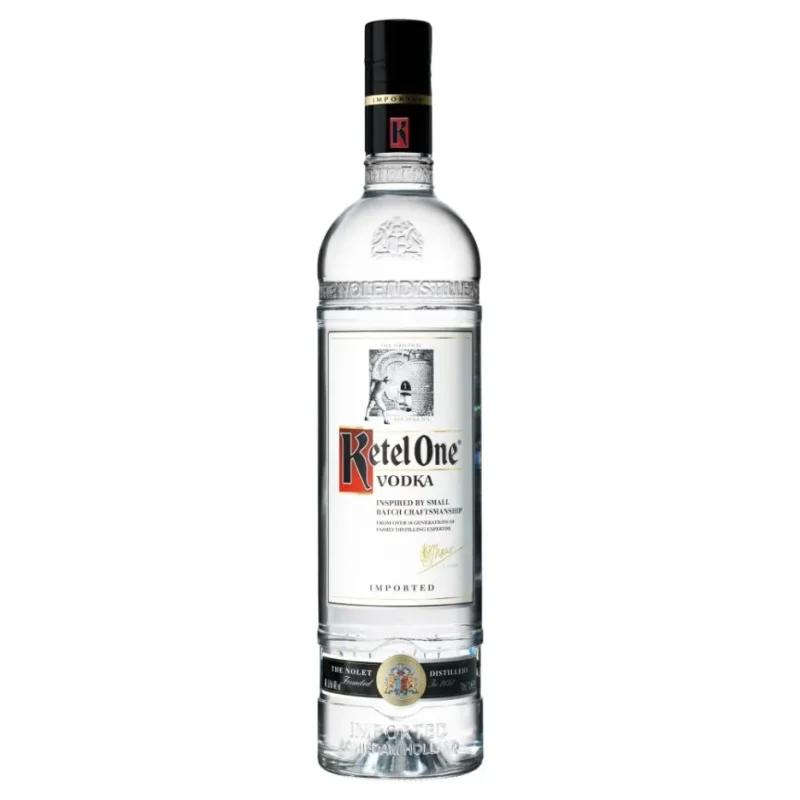Have you ever wondered how much is truly vodka? What makes vodka, well, vodka? The history and production process of this versatile spirit are as fascinating as its countless flavor profiles and mixability in cocktails. In this comprehensive guide, we'll answer the question: "How much is truly vodka?", exploring its origins, production techniques, and variations that make it such a beloved drink in the world of spirits.
Best Budget Vodkas Ranked
How Much Is Truly Vodka Table of Contents
Looking For The Best Vodka? You'll Love These Vodka Guides...
The Origins of Vodka
Vodka, a clear and colorless distilled spirit, has been around for centuries. While there is some debate as to the exact origin, most historians believe it was first produced in the 8th or 9th century in Eastern Europe, either in Russia or Poland. The word "vodka" itself comes from the Slavic word "voda," which means "water," alluding to its clear and pure appearance.
The Birth of Vodka
The original production of vodka was quite different from what we know today. Early forms of vodka were made using pot stills, which resulted in a lower alcohol content. Vodka was primarily used for medicinal purposes and played a significant role in Eastern European society as a remedy for common ailments. It wasn't until later that vodka became a popular drink for recreational consumption.
Vodka Production Techniques
Today, vodka is created using a more refined process, resulting in a distilled spirit that is both smooth and potent. Most vodka is made from fermented grains or potatoes, although a myriad of other ingredients can be used, such as corn, rye, wheat, sugar beets, or even grapes. Let’s explore the three main stages of vodka production:
1. Fermentation
Fermentation is the process that converts sugars present in the grain or potatoes into alcohol. This typically involves adding yeast to the mixture to break down the sugars, and the resulting product is a liquid called "mash" or "wash" with a relatively low alcohol content.
2. Distillation
Distillation is the key to achieving vodka's high purity and alcohol content. The fermented wash goes through a series of distillations, usually in column stills, which separate alcohol from water, impurities, and unwanted flavors. Each distillation results in a higher concentration of alcohol, and many premium vodkas will undergo multiple distillations to achieve their signature smoothness.
3. Filtration
Filtration is the final step of vodka production, responsible for removing any remaining impurities and ensuring a clear and clean final product. Various methods are used for filtration, such as activated charcoal, limestone, or even diamond dust. Some vodka producers have their own unique filtration processes, which can have a significant impact on the final taste and quality of the vodka.
Variations of Vodka
Not all vodkas are created equal. The base ingredient, production technique, and flavoring can significantly affect the final product. Here are some popular variations of vodka you might come across:
- Flavored Vodka: Infused with natural or artificial flavors, flavored vodkas can range from fruity and sweet to spicy and savory. These vodkas are great for adding depth to cocktails or sipping on their own!
- Regional Vodka: Many countries have their own unique spin on vodka production, such as Sweden's Absolut or France's Grey Goose. Varieties like these are often influenced by local ingredients and traditions.
- Potato Vodka: Considered by some to be a more traditional form of vodka, potato vodka has a creamier texture, subtle earthy notes, and is often enjoyed neat or in simple cocktails.
How Much Is Truly Vodka Example:
Imagine you're sipping on a classic vodka martini, garnished with a plump olive. The smooth and crisp vodka that forms the backbone of the cocktail went through a complex process to reach this point. It all began with the fermentation of grains or potatoes, followed by numerous distillations to achieve its high purity and alcohol content, and finally, filtration to remove any remaining impurities. The result is a versatile and delicious spirit that has become synonymous with elegance and sophistication in the world of cocktails.
Frequently Asked Questions
What is Tito's Vodka made from?
Tito's Vodka is made from corn, and it is gluten-free. Distilled in Austin, Texas, the company takes pride in its meticulous distillation process which results in a smooth, high-quality vodka.
How much does a bottle of Tito's Vodka cost on average?
The cost of a bottle of Tito's Vodka varies depending on the size and the region you are purchasing it from. On average, a 750ml bottle costs between $20 and $30 in the United States.
Can Tito's Vodka be considered a premium brand?
Yes, Tito's Vodka is often considered a premium brand due to its quality, branding, and price point. It has won numerous awards and is a popular choice among vodka enthusiasts.
Is Tito's Vodka good for cocktails?
Yes, Tito's Vodka is highly versatile and excellent for cocktails. Its smooth taste makes it an ideal base for a wide range of mixed drinks.
What are the distinctive characteristics of Tito's Vodka?
Tito's Vodka is known for its smoothness, slight sweetness, and clean finish, which are attributed to the corn-based recipe and the distillation process it undergoes.
Is Tito's Vodka gluten-free?
Yes, Tito's Vodka is gluten-free. Even though it's made from corn, which is a gluten-free grain, the distillation process also removes any trace of gluten, making it safe for those with gluten sensitivities.
How should Tito's Vodka be stored?
Tito's Vodka should be stored in a cool, dark place. While it doesn't necessarily need to be refrigerated, many prefer to keep it chilled for a better drinking experience.
Can Tito's Vodka go bad?
Vodka is a high-proof spirit and doesn't spoil or 'go bad' in the way that perishable food does. However, once opened, exposure to air can eventually affect its quality over a very long period.
What makes Tito's Vodka different from other vodkas?
Tito's Vodka stands out because it is handcrafted in pot stills in a traditional, old-fashioned method. Its taste and quality controls also differentiate it from many other vodkas on the market.
Is Tito's Vodka owned by a larger liquor conglomerate?
No, Tito's Vodka is independently owned. The founder, Tito Beveridge, started the business in the 1990s, and it has remained privately owned.
Why is Tito's Vodka often recommended for people with gluten intolerance?
Tito's Vodka is recommended for people with gluten intolerance because it is distilled from corn, a gluten-free grain, and the distillation process ensures that any potential traces of gluten are removed.
Is Tito's Vodka available internationally?
Yes, Tito's Vodka is available in several international markets, although availability may vary by country and region.
Has Tito's Vodka won any awards?
Yes, Tito's Vodka has won numerous awards throughout the years, including a Double Gold medal at the San Francisco World Spirits Competition.
Is Tito's Vodka environmentally friendly?
Tito's Vodka has made efforts to be environmentally conscious by implementing sustainable practices in its production processes and giving back to the community through various initiatives.
How does Tito's Vodka support local communities?
Tito's Vodka supports local communities through its philanthropic arm, Love, Tito's, which engages in charity work and supports non-profits around various causes.
Can Tito's Vodka be used in cooking?
Yes, Tito's Vodka can add depth to certain recipes, especially in sauces and desserts where it can enhance flavor profiles.
What sizes does Tito's Vodka come in?
Tito's Vodka is available in several sizes, ranging from the small 50ml mini-bottle to larger sizes such as the 1.75L bottle.
What is the alcohol content of Tito's Vodka?
Tito's Vodka has an alcohol content of 40% by volume (80 proof), which is standard for most vodkas in the market.
Is Tito's Vodka suitable for people following a keto diet?
Yes, Tito's Vodka is suitable for a keto diet as it contains no carbohydrates. It's a popular choice for those looking to enjoy spirits without added sugars.
Does Tito's Vodka offer flavored varieties?
No, Tito's Vodka focuses on producing only its classic, unflavored vodka in order to maintain the purity and quality of their product.
How is Tito's Vodka involved in animal welfare?
Tito's Vodka is known for its support of animal welfare initiatives. They run a program called Vodka for Dog People, which aims to unite with their love of pets and partner with organizations that benefit the welfare of pets and their families.
What kind of water is used to produce Tito's Vodka?
Tito's Vodka is made using water that has been purified through reverse osmosis, ensuring that the final product is of the highest quality and taste.
Now that we’ve taken a deep dive into the captivating world of vodka, you hopefully have a newfound appreciation for this iconic spirit. Next time you pour yourself a glass or mix up a vodka-based cocktail, take a moment to appreciate the history and craftsmanship that went into creating it. Feel free to share this article with fellow vodka enthusiasts, and don't forget to check out our other comprehensive guides and articles on Vodka Doctors for even more insights into vodka brands, cocktail recipes, and tips to enjoy the spirit responsibly. Cheers!
















